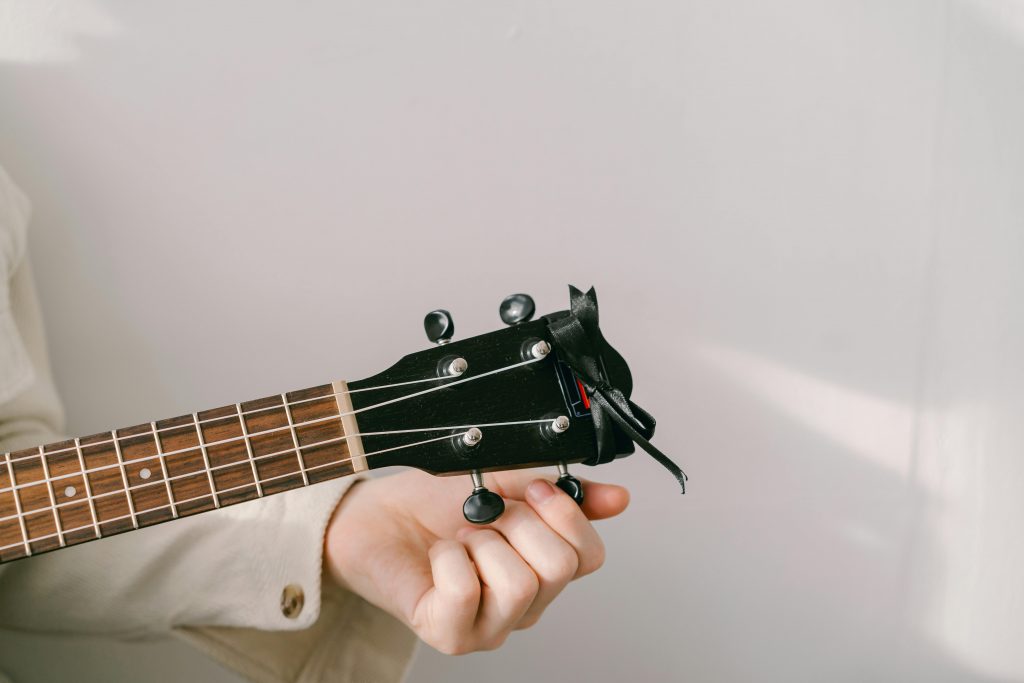
Whether you’re just starting out or find yourself without a tuner, knowing how to tune a guitar without a tuner is an essential skill every guitarist should have. It can save you in situations when your electronic tuner dies, gets lost, or simply isn’t handy. Plus, learning this skill improves your ear and helps you understand your instrument better.
This guide covers practical tips for tuning both acoustic and electric guitars without a tuner, making sure your strings sound great no matter the situation.
Why Should You Learn to Tune Your Guitar Without a Tuner?

Before diving into how to tune your guitar manually, it’s worth asking why this skill matters:
- Tuner Not Available: Battery dead or forgot your tuner? No worries.
- Improving Ear Training: You’ll develop a better musical ear.
- Quick Adjustments: Sometimes quick tuning by ear can be faster than fiddling with electronics.
- Playing Anywhere: Outdoor gigs, camping, or travel — no gadgets required.
- Understanding Your Guitar’s Sound: You’ll get familiar with how your strings should feel and sound in tune.
What Are the Basics of Guitar Tuning?
To tune a guitar, you need to adjust the pitch of each string to match a specific note. Standard tuning for a six-string guitar (from thickest to thinnest string) is:
- 6th string: E (lowest pitch)
- 5th string: A
- 4th string: D
- 3rd string: G
- 2nd string: B
- 1st string: E (highest pitch)
Your goal is to get each string as close as possible to these notes, whether using an external reference or tuning relative to another string.
How to Tune a Guitar Without a Tuner
1. Use a Reference Pitch
If you have access to a reliable pitch source, such as:
- A piano or keyboard
- A pitch pipe
- A tuning app with sound only (without relying on its visual tuner)
- Someone else playing a well-tuned instrument
You can match your guitar strings to these reference notes.
How to do it:
- Play the reference note.
- Play the guitar string and listen carefully.
- Turn the tuning peg slowly until the pitch matches the reference.
- Repeat for all strings.
2. The Fifth-Fret Method: Tuning Strings Relative to Each Other
Video Source
If you don’t have any external reference, the classic method is tuning your guitar strings to each other. This method uses the 5th fret on one string to match the open note of the next string.
Steps:
- Start by assuming your 6th string (low E) is close to correct. You can guess or use an external reference if available.
- Press the 5th fret on the 6th string (this note is A). Tune your 5th string open (A) to match the pitch of that fret.
- Press the 5th fret on the 5th string (D note). Tune your 4th string open (D) to this pitch.
- Press the 5th fret on the 4th string (G note). Tune your 3rd string open (G) to match.
- Now, the 3rd string is tuned differently: press the 4th fret on the 3rd string (B note). Tune your 2nd string open (B) to this pitch.
- Press the 5th fret on the 2nd string (E note). Tune your 1st string open (high E) to this pitch.
This method works well but only guarantees relative tuning. If your starting string is off, all strings will be off but in tune with each other.
3. Using Harmonics to Tune
Harmonics are natural bell-like tones produced by lightly touching a string at certain points (usually the 5th, 7th, or 12th fret) without pressing it down fully.
How to use harmonics for tuning:
- Play the 5th fret harmonic on the 6th string and match it with the 7th fret harmonic on the 5th string.
- Repeat this for each pair of strings: 5th to 4th, 4th to 3rd, 3rd to 2nd (with the 4th fret harmonic on the 3rd string), and 2nd to 1st string.
This method is popular for electric guitars because harmonics ring clearly and are easier to compare.
What Are the Differences When Tuning Acoustic vs Electric Guitars Without a Tuner?
Acoustic Guitars
Acoustic guitars produce more resonance and sustain, making it easier to hear the pitch clearly. For beginners learning how to play acoustic guitar, tuning by ear is a foundational skill that helps develop a better sense of pitch and sound. Using your ear to match pitch is often simpler because notes ring out longer. Harmonics tend to be more noticeable due to the guitar’s body amplification.
Electric Guitars
Electric guitars have less natural resonance when unplugged, so tuning by ear can be more challenging. It helps to plug the guitar into an amp with a clean tone or use headphones to hear pitches clearly. Harmonics are very clear on electric guitars, so harmonic tuning works especially well.
Tips for Improving Your Tuning Skills Without a Tuner
- Train your ear regularly by listening to notes and intervals.
- Practice tuning in quiet environments so you can better hear pitch differences.
- Use a reference tone app occasionally to check your tuning accuracy.
- Tune slowly and make small adjustments to avoid overshooting the pitch.
- Learn the sound of each string’s open note so you recognize it immediately.
- Play chords and listen for dissonance or “out of tune” sounds, adjusting accordingly.
What Are Common Mistakes When Tuning Without a Tuner?
- Starting with a wrong reference string: If your first string is way off, the rest will follow out of tune.
- Turning tuning pegs too fast or too much: This can lead to overshooting the pitch or even breaking strings.
- Ignoring environmental factors like temperature and humidity that affect string tension.
- Not listening carefully for beat frequencies (wobbling sounds when two notes are close but not identical) which indicate slight detuning.
Quick Summary: How to Tune a Guitar Without a Tuner
- Start with a reliable reference pitch or assume the 6th string is close.
- Use the fifth-fret method to tune other strings relative to the 6th string.
- Use harmonics, especially on electric guitars, for clear pitch comparison.
- Tune slowly and carefully, listening closely.
- Practice often to improve your ear.
Wrapping Up
Knowing how to tune a guitar without a tuner is an invaluable skill for any guitarist. Whether you play acoustic or electric, these methods will keep you sounding good when you’re away from gadgets or in a pinch.
Practice these techniques regularly, and over time you’ll not only save yourself from tuning emergencies but also sharpen your musical ear — an asset that will improve your playing overall.
Happy tuning!


